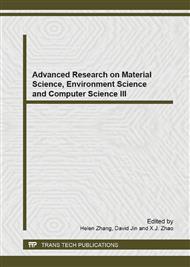p.496
p.501
p.505
p.509
p.515
p.519
p.524
p.528
p.532
Research on Applied Technology of Palmprint Recognition Based on Fisher Linear Discriminant and Improved PCA Algorithm
Abstract:
The information applied technology of palmprint recognition is a biometric technology, it’s based on the effective information on the palm (such as: palmprint) to identifies people. The palmprint is unique and characteristic, these are the identification of critical conditions. The feature extraction of palmprint image is a prerequisite for recognition, feature extraction algorithm depends on the quality of the recognition rate and efficiency. This paper presents a method of palmprint recognition algorithm based on Fisher linear discriminant analysis and improved PCA algorithm. The experimental results show that, the recognition rate is improved.
Info:
Periodical:
Pages:
515-518
Citation:
Online since:
January 2014
Authors:
Price:
Сopyright:
© 2014 Trans Tech Publications Ltd. All Rights Reserved
Share:
Citation:


